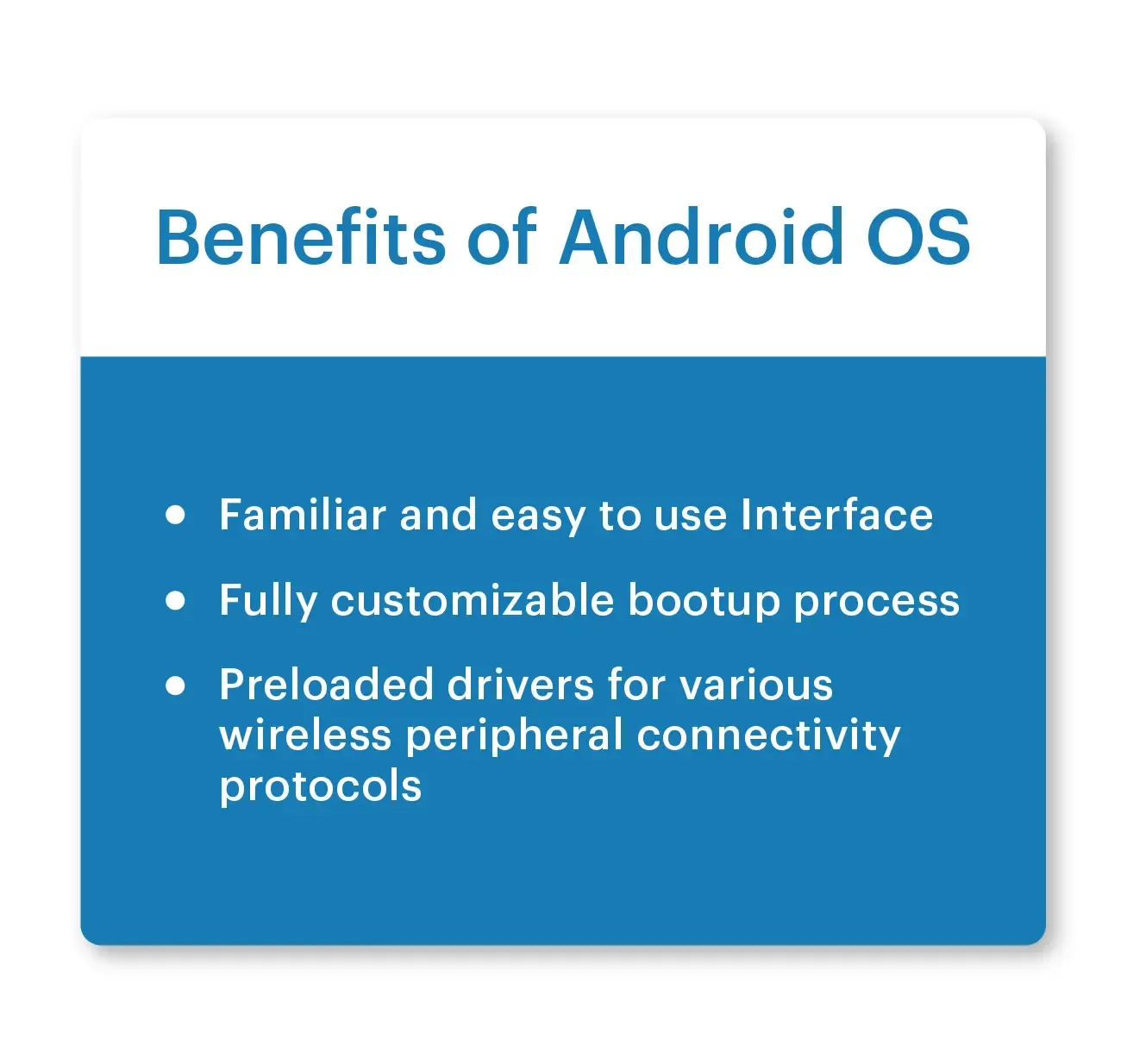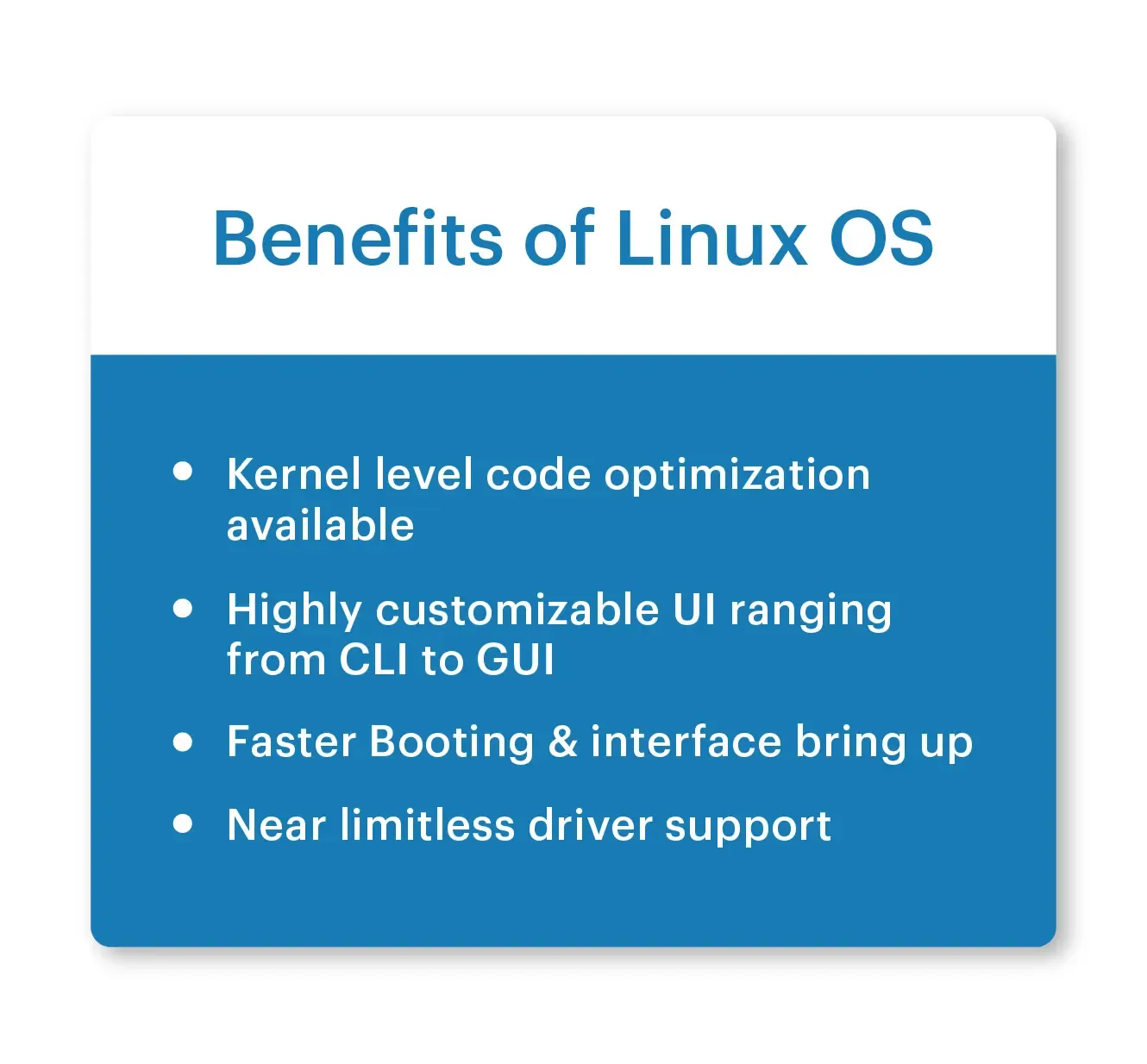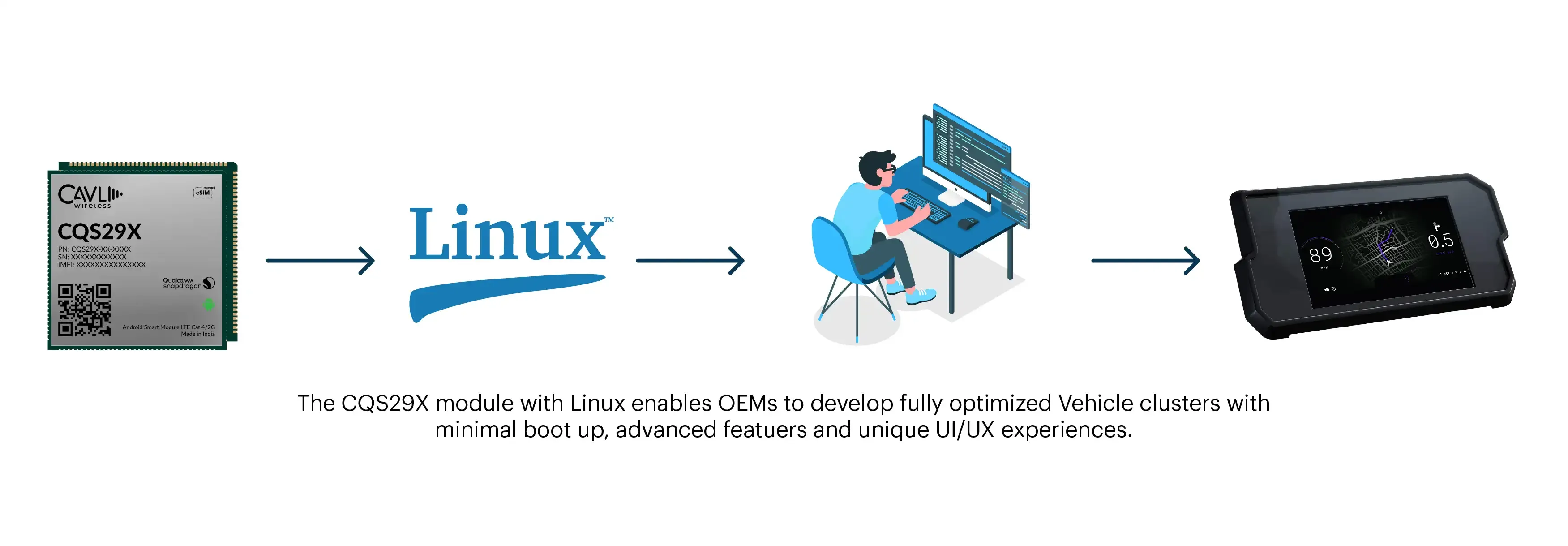In the dynamic landscape of the Internet of Things (IoT), selecting the right operating system (OS) is paramount. Original Equipment Manufacturers (OEMs) face this critical decision, knowing it impacts development complexity, time to market, and ultimately, the end-user experience. Recognizing this, Cavli engineered the CQS29X Smart Module Series to offer a dual OS advantage—providing both Android and Linux—coupled with flexible memory configurations, empowering OEMs with unprecedented versatility.
The challenge for OEMs isn't simply about having an OS; it's about choosing the right OS. Each OS presents its own strengths and weaknesses, influencing the entire development journey and the final product's capabilities. Let's examine the factors that drive OEMs towards or away from a particular OS:
Android vs. Linux for IoT: An OEM Perspective
OEMs selecting an operating system for the CQS29X module face a choice between Android and Linux, each offering distinct advantages and trade-offs. Android, often preferred for its familiar user interface paradigm, provides a rich set of pre-built components and applications. This can potentially accelerate development and reduce time to market. Android also offers established over-the-air (OTA) update mechanisms, simplifying ongoing maintenance and feature enhancements.
However, the comprehensive nature of Android necessitates greater system resources, including memory and processing power. Customization options are also constrained within the Android framework, potentially limiting flexibility for specialized applications. Furthermore, real-time performance can be less deterministic due to inherent OS overhead. Security updates, while readily available, depend on consistent implementation and ongoing maintenance. Android’s built-in networking capabilities are generally extensive, providing a broad range of communication options.

Linux, on the other hand, presents a uniquely contrasting approach. Its open-source nature and highly configurable architecture offers a greater degree of customization and complete system control, extending down to the kernel level oif the operating system. This granular control allows for optimization specific to the target application and hardware, particularly beneficial for resource-constrained devices. Linux’s streamlined architecture typically requires fewer system resources than Android, resulting in a smaller memory footprint and potentially lower power consumption, leading to more hardware resource headroom for custom applications. Real-time performance tends to be more deterministic due to the elevated direct hardware access made possible by Linux.
Yet, this flexibility comes with the responsibility of custom security implementation and maintenance, requiring specialized expertise in C based coding. Similarly, OTA updates require custom implementation and infrastructure. While the development cycle might be longer due to the custom nature of Linux-based systems, the resulting solution can be highly optimized and tailored to the precise requirements of the application. The user interface is also highly customizable, allowing for designs ranging from simple command-line interfaces to complex graphical user interfaces. This level of control allows OEMs to create highly optimized connected systems, maximizing the utilization of every Hertz of processing power, every byte of memory, and every data packet either sent of received.

The EDGE: Dual OS and Flexible Memory Variants
Furthermore, the availability of versatile memory configurations multiplies the practical variants of the CQS29X module. Whether it's a 2GB RAM + 16GB ROM configuration for a compact, cost-sensitive IoT application or a 4GB RAM + 64GB ROM configuration for a high-end Smart Kiosk, OEMs can select the ideal combination of processing power, storage capacity, and operating system to precisely match their application needs. This flexibility is akin to a toolbox filled with precision instruments, each designed for a specific purpose, empowering engineers to craft the perfect solution for any challenge.
The 2GB RAM + 32GB ROM configuration provides a balanced option, offering ample storage for data logging and application code while maintaining a reasonable cost. The 3GB RAM + 32GB ROM configuration is well-suited for applications prioritizing processing power over extensive storage, such as edge computing devices or automotive cluster solutions.
Learn more about how the combinations of two different operating systems along with multiple memory variants can result in different boot up times and applications in our earlier blog: Optimizing Boot Times with CQS29X Smart Module Series
Streamlined Development Pathways for OEMs
Imagine stepping into the shoes of a retail systems architect designing an interactive kiosk for a high-end boutique. You envision a sleek, engaging interface that seamlessly integrates with inventory management, customer loyalty programs, and personalized recommendations. You recognize that Android's rich UI/UX capabilities and vast application ecosystem are the perfect tools for the job. Leveraging the 4GB/64GB CQS290 configuration, you harness the power of Android to create a visually stunning and highly responsive kiosk experience. The larger memory capacity ensures smooth operation, even with multiple applications running concurrently, providing not just a luxurious and efficient customer experience but an experience that ensures that any user leaving the kiosk will have their queries answered in the most hassle-free manner.

Now, shift your perspective to that of an automotive engineer tasked with designing a cutting-edge connected dashcam solution. Real-time performance is paramount—every millisecond matters. You recognize that a lengthy boot sequence could be the difference between capturing a critical event and missing it entirely. With the CQS292, you opt for the lean efficiency of Linux, paired with the 3GB/32GB memory configuration. This choice allows you to bypass the resource-intensive Android stack and focus on optimizing the boot process for speed and responsiveness. The result? When the driver shifts into reverse, the rearview camera/display boots in a matter of seconds, providing critical visibility without delay.
This real-time responsiveness was not achieved for the sake of showcasing the capability of the module, but to service on of the most imperative requirements of any automotive solution : Safety. Thereby Cavli's CQS29X stands as a benchmark for Smart Connected Solutions, capable of being tailored to fit whatever IoT enabled usecase it is meant to service.
Enhanced Experiences & Tailored Functionality for End Users
Consider the experience of a medical technician or an emergency responder using a Smart handheld device for healthcare monitoring. The device, powered by a CQS290 module running on Linux, boots up quickly, even in harsh environmental conditions. The optimized Linux build, ensures that the technician can access critical patient vitals and diagnostics within seconds, minimizing downtime and maximizing proper treatment. The responsive system allows them to focus on the task at hand, rather than waiting for the device to catch up while the afflicted patient can also rest assured that they are getting the best treatment and recover as soon as possible from their current condition.

Now, picture a shopper interacting with a Smart Vending Machine. The familiar and intuitive touchscreen display, powered by Android running on a 4GB/64GB CQS290 module, provides a seamless and engaging purchasing experience. They can effortlessly browse product options, customize their order, and make secure payments, all thanks to the rich functionality and responsiveness of the Android OS. The default peripheral connectivity options available on Android including protocols like WiFi and BLE support can connect the Kiosk with the users Smartphone to further enhance their experience. Such capabilites can make a Smart module running on Android capable of delivering seamless and intuitive operability to end users that no other Operating System can challenge.
Closing Notes
The CQS29X series, with its dual OS advantage and flexible memory configurations, allows OEMs to create truly customized IoT solutions that meet their exact requirements. Whether it's the lean efficiency of Linux or the rich features of Android, the CQS29X provides the building blocks for innovation in a connected world. Contact Cavli to discuss your next project and discover how the CQS29X can power your vision.
Go Beyond and Explore
What are the key factors contributing to the CQS29X series’ optimized boot times?
The CQS29X series achieves superior boot times through meticulous engineering optimizations at both the hardware and software levels. These include:
- Efficient memory configurations (1GB, 2GB, 3GB LPDDR4X RAM) and storage options (8GB, 32GB, 64GB eMMC) that reduce initialization delays.
- Customized OS-level optimizations tailored for Android and Linux, streamlining system services for faster Diagnostic and Full boot modes.
- Advanced bootloader enhancements leveraging Qualcomm QCM2290/QWM2290 chipsets to minimize latency during system initialization.
How does the choice between Android and Linux impact device boot-up performance on the CQS29X series?
The operating system plays a pivotal role in determining boot-up efficiency:
- Linux: Offers faster Diagnostic and Full boot times (as low as 5 seconds for Diagnostic and 14 seconds for Full boot) due to its lightweight kernel and minimal overhead. Ideal for resource-constrained or real-time applications.
- Android: While inherently slower due to its complex framework, optimizations on the CQS29X series achieve reasonable boot times (~22–24 seconds for Diagnostic, ~45–60 seconds for Full boot), making it suitable for multimedia-rich or interactive applications.
What engineering considerations should be taken into account when selecting a CQS29X configuration?
Engineers must evaluate application-specific requirements against the series' configurations:
- 1GB LPDDR4X + 8GB eMMC: Best for cost-sensitive projects like basic sensor nodes and data loggers where boot time and power efficiency are critical.
- 2GB LPDDR4X + 32GB eMMC: Balances performance and cost, catering to industrial IoT gateways and edge computing devices.
- 3GB LPDDR4X + 64GB eMMC: Designed for demanding applications requiring high-speed data processing, complex user interfaces, or rich multimedia.
What diagnostics and boot modes are available for system testing and deployment with the CQS29X series?
The CQS29X series supports two distinct boot modes:
- Diagnostic/Display Boot: Activates essential system functionalities and interfaces within 5–24 seconds, depending on the configuration. Ideal for quick diagnostics, testing, and partial system readiness.
- Full Boot: Ensures complete system initialization, including all services and features, with boot times ranging from 14 seconds (Linux) to 60 seconds (Android). This mode is critical for applications requiring full functionality and operational readiness.

